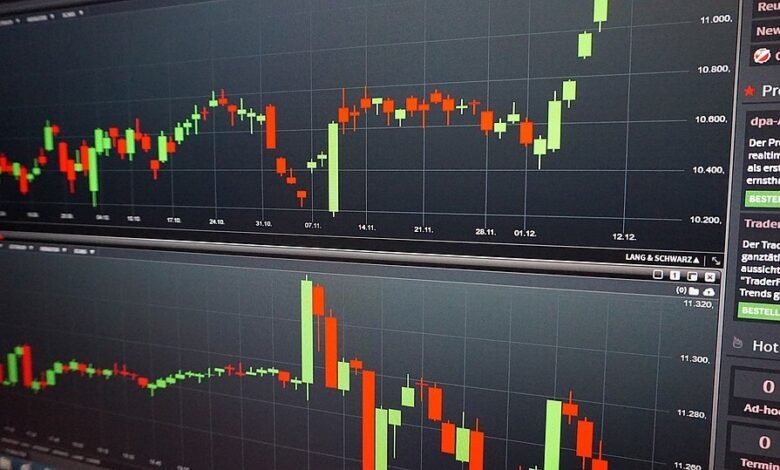How to Read Crypto Charts: A Comprehensive Guide

How to read Crypto charts. Cryptocurrency trading and investing can be both thrilling and daunting. The volatile nature of digital assets demands a keen understanding of how to analyze and interpret market data. Reading crypto charts is a crucial skill for navigating this complex landscape. This guide will walk you through the basics of crypto charts, key indicators, and advanced techniques to enhance your trading strategy. How to Read Crypto Charts
1. Understanding the Basics of Crypto Charts
Before diving into the intricacies of crypto chart analysis, it’s essential to grasp the fundamental components of these charts.
1.1 What is a Crypto Chart?
A crypto chart is a graphical representation of a cryptocurrency’s price movements over time. It helps traders and investors visualize historical performance and identify trends. The most common types of crypto charts include line charts, bar charts, and candlestick charts. How to Read Crypto Charts
1.2 Types of Charts
- Line Charts: These charts display a single line that represents the closing prices of a cryptocurrency over time. They offer a simple overview of the asset’s price movement.
- Bar Charts: Bar charts show the opening, closing, high, and low prices for a specific time period. Each bar represents a distinct time interval (e.g., 1 hour, 1 day).
- Candlestick Charts: Candlestick charts are the most popular in crypto trading. They provide a detailed view of price movements with open, high, low, and close prices represented in individual “candles” for each time period. Each candle typically includes a body and wicks (or shadows).
2. Key Components of Crypto Charts
To effectively analyze crypto charts, you need to familiarize yourself with key components and terminology. How to Read Crypto Charts
2.1 Price Action
Price action refers to the movement of a cryptocurrency’s price over time. Observing price action helps traders identify trends, reversals, and patterns.
2.2 Time Frames
Time frames are intervals on the chart, such as 1 minute, 5 minutes, 1 hour, 1 day, etc. Shorter time frames offer a detailed view of price movements, while longer time frames provide a broader perspective.
2.3 Support and Resistance
- Support: A price level where a cryptocurrency tends to stop falling and may even rebound. It represents a level of demand.
- Resistance: A price level where a cryptocurrency often stops rising and may reverse direction. It represents a level of supply.
3. Analyzing Trends and Patterns
Identifying trends and patterns is crucial for predicting future price movements. Here’s how to recognize them.
3.1 Trends
- Uptrend: Characterized by higher highs and higher lows. An uptrend indicates a bullish market sentiment.
- Downtrend: Marked by lower highs and lower lows. A downtrend signifies a bearish market sentiment.
- Sideways Trend: Occurs when the price moves within a horizontal range. This indicates consolidation or a period of indecision.
3.2 Chart Patterns
- Head and Shoulders: This pattern signals a potential reversal. An inverse head and shoulders pattern indicates a bullish reversal, while a regular head and shoulders pattern suggests a bearish reversal.
- Double Top and Double Bottom: A double top is a bearish reversal pattern, while a double bottom is a bullish reversal pattern. How to Read Crypto Charts
- Triangles: These patterns (ascending, descending, and symmetrical) indicate a period of consolidation before a breakout.
4. Key Technical Indicators
Technical indicators are tools used to analyze price data and forecast future movements. Here are some essential indicators: How to Read Crypto Charts
4.1 Moving Averages
- Simple Moving Average (SMA): An average of the closing prices over a specific period. It smooths out price data to identify trends.
- Exponential Moving Average (EMA): A weighted moving average that gives more importance to recent prices. It reacts faster to price changes than the SMA.
4.2 Relative Strength Index (RSI)
RSI measures the speed and change of price movements. It ranges from 0 to 100 and helps identify overbought or oversold conditions. An RSI above 70 may indicate that an asset is overbought, while an RSI below 30 suggests it is oversold.
4.3 Moving Average Convergence Divergence (MACD)
MACD is a trend-following momentum indicator that shows the relationship between two moving averages of a cryptocurrency’s price. It consists of the MACD line, signal line, and histogram, helping traders identify potential buy or sell signals. How to read Crypto charts
4.4 Bollinger Bands
Bollinger Bands consist of three lines: the middle band (SMA), the upper band, and the lower band. The bands expand and contract based on market volatility. Price touching the upper band may indicate overbought conditions, while touching the lower band may indicate oversold conditions.
5. Combining Technical and Fundamental Analysis
While technical analysis focuses on price data, fundamental analysis considers factors like technology, team, and market demand. Combining both approaches provides a more comprehensive view.
5.1 Technical Analysis
Technical analysis involves studying price charts and indicators to make trading decisions. It helps identify entry and exit points based on historical data. How to Read Crypto Charts
5.2 Fundamental Analysis
Fundamental analysis examines a cryptocurrency’s intrinsic value by evaluating factors like its technology, use case, and overall market conditions. How to Read Crypto Charts. It provides insights into long-term potential and helps assess the credibility of an asset. How to read Crypto charts
6. Practical Tips for Reading Crypto Charts
Here are some practical tips to improve your chart reading skills:
6.1 Start with the Basics
Begin by familiarizing yourself with basic chart types and components. Practice reading simple charts before moving on to more complex ones. How to Read Crypto Charts
6.2 Use Multiple Indicators
Relying on a single indicator can be misleading. Use a combination of indicators to confirm signals and make more informed decisions.
6.3 Stay Updated
Crypto markets are highly dynamic. Stay informed about market news, developments, and economic events that could impact cryptocurrency prices. How to Read Crypto Charts
6.4 Practice Risk Management
Always use risk management strategies to protect your capital. Set stop-loss orders and avoid investing more than you can afford to lose.
6.5 Keep a Trading Journal
Maintain a trading journal to track your trades, strategies, and outcomes. This helps you learn from past mistakes and refine your approach.
Conclusion
Reading crypto charts is an essential skill for navigating the world of cryptocurrency trading and investing. By understanding the basics, recognizing trends and patterns, using technical indicators, and combining technical with fundamental analysis, you can make more informed decisions and improve your trading strategies. Remember to start with the basics, practice regularly, and stay updated with market trends. With time and experience, you’ll become more adept at reading crypto charts and navigating the ever-evolving digital asset market. How to read Crypto charts



